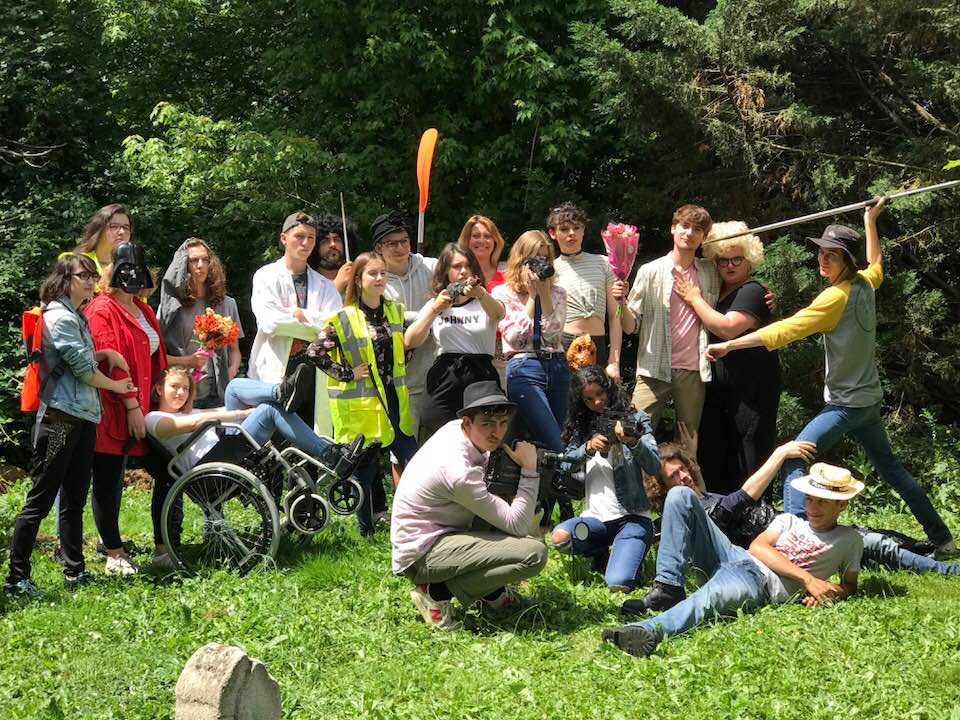Film symbols
A film is made up of many elements. First of all a writer comes up with an idea. This idea is
written up as a story. The story then becomes visual when an artist creates a storyboard for the
film. To create meaning on the screen the director uses something called SIGNIFIERS to help the
audience understand what is going on.
A SIGNIFIER is like a symbol, it is a verbal (seen) or an aural (heard) SIGN that an audience places
a meaning onto; for example, a dove could mean peace, a creaky noise or a scream could create
fear, a heart shape could signify love etc.
What do the following pictures and sounds make you think of?
-
THE SUN:
-
THE RAIN:
-
A SMILE:
-
THE SOUND OF THUNDER:
-
SOMEBODY USING BINOCULARS:
-
SHADOWS:
What about these?
a high gate, a telephone off the hook, the sound of dogs barking, a calm lake, cars beeping, sirens, a hooded figure, running footsteps, lightning, a creaking door, tapping on glass, smoking, shuffling paper, a wolf howling, fire, a sweating man, heavy breathing, a door slamming, a clock, a ring taken off a finger, a train speeding through the night, a vulture, a glass of wine (with lipstick on the rim?), a bird in flight, a bird in a cage, a candle, an axe, a cross, a bat, a dead butterfly, a key, broken glass ...
Can you think of any other symbols film makers use often?
Film ~ language
The way in which each section of a film is put together is vital to our understanding of it.
Different types of shot give different meaning.
CAMERA SHOTS
Close Up: Generally any close up shot of an object gives the object meaning. If the close up is of the whole or part of the face then it usually shows emotion. Only one character is usually in a close up. This means that the character is on their own and can seem isolated in this type of shot.
Mid Angle shot: A shot showing characters from the waist upwards. This shot allows other characters to be in view and so allows character interaction. This often makes for more sociable shots.
High Angle: A shot taken from above the action and actors. This can make us feel powerful and superior and the actors seem small and vulnerable.
Low Angle: A shot taken from below an actor, as if he/she is looking down on us. This may make us feel small and vulnerable and the actor/actress seem powerful.
OTHER CAMERA SHOTS TO LOOK OUT FOR:
Establishing shot (also called Master shot): shows the location, setting, or landscape of a scene.
Long shot: presents the action's setting, with some characters. A mood or sense of drama may be presented with this shot.
Full shot: a shot that frames the entire body of one or more characters.
Medium long shot (also called an American shot). shows 1 to 3 characters from thigh up. This common shot shows the characters and their role without emphasising their emotions. This shot is the basis for all narrative structures.
Medium shot (also called a Half Shot) - from the waist up. More emphasis on characters and their emotions.
Extreme close-up (or detailed shot): more magnified than a close-up, and will focus on one part—a hand, and eye, a mouth etc.
Insert: a detail shot magnifying a thing (a letter, a business card, etc.)
Film ~ presentational devices
Presentational devices / mise en scene
Film makers use presentational devices to add meaning to situations and create the audience’s view of characters.
MISE EN SCENE
Mise en scene is a French term, which means 'put on stage'. It refers to everything we see on the screen. The scene background and atmosphere, the characters' appearance - their costumes, makeup, hairstyles, acting styles and props - all these are key to the creation of a believable world and to the understanding of the story. The main elements to consider in mise en scene are:
· setting and props
· costume and make-up
· the expression and movement of the actors
· lighting and colour
· the way objects and people are positioned.
Presentational devices
Which of these elements of mis-en-scene have good/ evil associations?
Comment on what these things make you think of.
A frown
A factory
A wire fence
A clenched fist
An apron
A slammed door
A smile
Blankets
Bright colours
Darkness/ shadows
Metallic clanging
Copyright © 2001 www.teachit.co.uk


